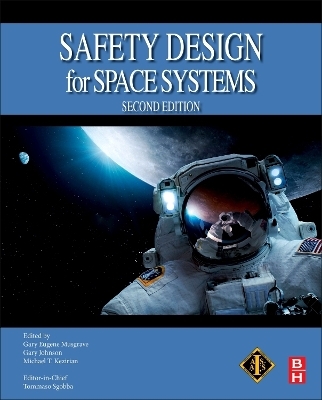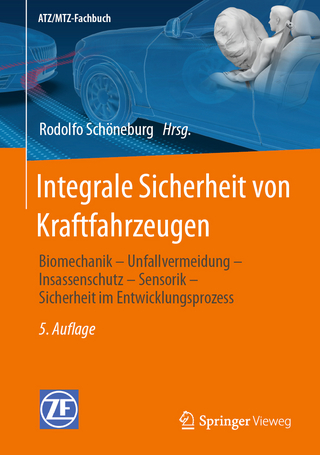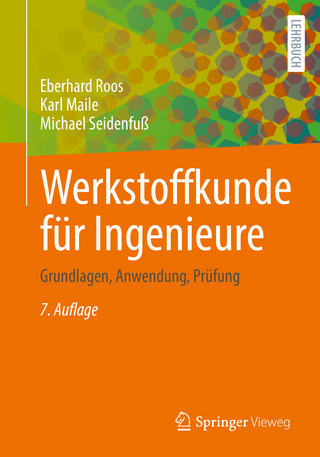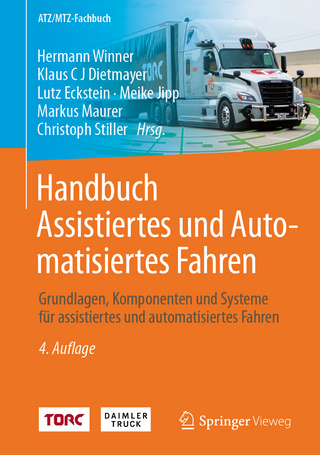
Safety Design for Space Systems
Butterworth-Heinemann Inc (Verlag)
978-0-323-95654-3 (ISBN)
Tommaso Sgobba is Executive Director and Board Secretary of IAASS (International Association for the Advancement of Space Safety). Tommaso Sgobba has been IAASS first President in the period 2005-2013. Until June 2013 Tommaso Sgobba has been responsible for flight safety at the European Space Agency (ESA), including human-rated systems, spacecraft re-entries, space debris, use of nuclear power sources, and planetary protection. He joined the European Space Agency in 1989, after 13 years in the aeronautical industry. Initially he supported the developments of the Ariane 5 launcher, several earth observation and meteorological satellites, and the early phase of the European Hermes spaceplane. Later he became _Product Assurance and Safety Manager for all European manned missions on Shuttle, MIR station, and for the European research facilities of the International Space Station. He chaired for 10 years the ESA ISS Payload Safety Review Panel. He was also instrumental in setting up the ESA Re-entry Safety Review Panel. Tommaso Sgobba holds an M.S. in Aeronautical Engineering from the Polytechnic of Turin (Italy), where he was also professor of space system safety (1999-2001). He has published several articles and papers on space safety, and co-edited the text book “Safety Design for Space Systems, published in 2009 by Elsevier, that was also published later in Chinese. He was the Editor-in-Chief of the books “Safety Design for Space Operations (2013) and “Space Safety and Human Performance (2017) also published by Elsevier. He is Managing Editor of the Journal of Space Safety Engineering and member of the editorial board of the Space Safety Magazine. Tommaso Sgobba is the inventor (patent pending) of the R-DBAS (Re-entry, Direct Broadcasting Alert System), to alert the air traffic of falling fragments from uncontrolled space system re-entry. Tommaso Sgobba received the NASA recognition for outstanding contribution to the International Space Station in 2004, and the prestigious NASA Space Flight Awareness (SFA) Award in 2007. Dr. Gary Eugene Musgrave received his undergraduate training at Auburn University, where he received the Baccalaureate in Biological Sciences in 1969, and at the Georgia Institute of Technology, where he studied Electrical Engineering from 1971 until 1973. He received his graduate education at Auburn University, receiving the Master of Science in the field of Pharmacology/Toxicology from the School of Pharmacy in 1976, and the Doctor of Philosophy in the fields of Cardiovascular Physiology and Autonomic Neuropharmacology from the School of Veterinary Medicine in 1979. After completing his postdoctoral research, Dr. Musgrave was appointed Research Assistant Professor in the Department of Medicine at the Medical College of Virginia where he was Co-Investigator and the Engineering Project Director for a NASA sponsored investigation of the baroreflex regulation of blood pressure in astronauts during and after missions in space. This experiment ultimately was flown on the Spacelab “Space Life Sciences-1 mission. In 1982, Dr. Musgrave joined the NASA team at the Johnson Space Center in Houston, Texas, as an employee of the Management and Technical Services Company (MATSCO), a subsidiary of the General Electric Corporation, as the contractor manager for NASA’s Detailed Science Objective Program, where he was responsible for the development, certification, testing, and flight support for numerous items of medical hardware flown on various Space Shuttle missions. Dr. Musgrave retired from NASA during 2008 and presently resides in Tennessee, where he works as a consultant and educator. He is a member of the International Association for the Advancement of Space Safety, and its Academic Committee, and is Chief Editor of the 1st edition of Safety Design for Space Systems. Gary Johnson began his career in 1964 at NASA Johnson Space Center as a project engineering in the Power Distribution and Sequencing Section for subsystem support of the Apollo sequencer system. Following various roles and responsibilities, last being Associate Director for Technical, Safety and Mission Assurance Directorate, he retired from NASA in 2006. From March 2007 to June 2010 he was an SAIC IPAO Contract technical consultant on the Constellation Program Orion Crew Exploration Vehicle Standing Review Board for Safety, and from June 2007 to September 2012 he was an SAIC Safety & Mission Assurance Support Services Contract technical consultant for Apollo and Space Shuttle lessons learned training and Space Shuttle and International Space Station (ISS) S&MA Flight Safety Office assessments. As of October 2012, he has been an Aerospace Safety Consultant for J & P Technologies, supporting the SAIC Safety & Mission Support Engineering Services Contract to the NASA Johnson Space Center Safety & Mission Assurance Directorate, Flight Safety Office. Dr. Kezirian has a Bachelors from Brown University (1989) and a Masters and Doctorate from the Massachusetts Institute of Technology (1992 and 1996 respectively), all in Chemical Engineering. He was an Associate Technical Fellow at the Boeing Company, most recently supporting the development of the Boeing Starliner CST-100, through the NASA Commercial Crew Program. For the Space Shuttle Program, he was the Boeing Safety Representative to the Mission Management Team and responsible for all safety products related to flight operations including flight readiness reviews and the resolution of on-orbit anomalies. In the Return to Flight activities following the Space Shuttle Columbia accident, Dr. Kezirian became the analysis lead of an integrated NASA cross agency to develop flight rationale to permit continued Shuttle flight operations. He is also a Fellow Member of IAASS, an Associate Fellow of the AIAA, and a member of the AIAA Standards Steering Committee, for which he oversaw the development of new standards for pressure vessels. He now teaches IAASS-sponsored, industry-focused courses on COPV design, certification, and operations. Dr. Kezirian is President of the International Space Station Foundation and is the founding editor-in-chief of the Journal of Space Safety Engineering, published by Elsevier. In 2009, he was awarded the NASA Astronaut Personal Achievement Award (Silver Snoopy).
1 Introduction 2 The space environment: natural and induced 3 Overview of bioastronautics 4 Space safety engineering and management 5 Safety policy and human rating 6 Probabilistic risk assessment with emphasis on design 7 Safety considerations for the ground environment 8 Emergency and crew survival systems 9 Space debris protection 10 Docking systems design 11 Parachute system design 12 Materials safety 13 Containment of hazardous materials 14 Propellant systems safety 15 Environmental impact of propulsion systems and green alternatives 16 Life support systems safety 17 Fire safety 18 Oxygen systems safety 19 Avionics safety 20 Software system safety 21 Battery safety 22 Space nuclear systems safety design 23 Mechanical systems safety 24 Pyrotechnic safety 25 Laser safety 26 Extravehicular activity safety 27 Robotic systems safety Appendix A: Probability of cancer casualty constraint for exposures to radioactive materials Appendix B: Risk estimation methodology for RPS & RHU launch accidents
| Erscheinungsdatum | 29.07.2023 |
|---|---|
| Verlagsort | Woburn |
| Sprache | englisch |
| Maße | 191 x 235 mm |
| Gewicht | 1000 g |
| Themenwelt | Technik ► Fahrzeugbau / Schiffbau |
| Technik ► Luft- / Raumfahrttechnik | |
| Technik ► Maschinenbau | |
| Wirtschaft | |
| ISBN-10 | 0-323-95654-8 / 0323956548 |
| ISBN-13 | 978-0-323-95654-3 / 9780323956543 |
| Zustand | Neuware |
| Informationen gemäß Produktsicherheitsverordnung (GPSR) | |
| Haben Sie eine Frage zum Produkt? |
aus dem Bereich


